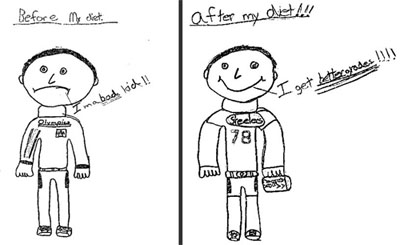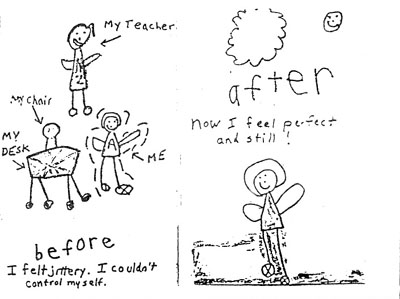 Most of the families who use the Feingold Program do so to help a child who has been diagnosed with ADHD. Researchers have found that children with ADHD frequently have additional health and behavior problems such as the symptoms listed on our home page.
Most of the families who use the Feingold Program do so to help a child who has been diagnosed with ADHD. Researchers have found that children with ADHD frequently have additional health and behavior problems such as the symptoms listed on our home page.
What has most recently been named ADHD is a collection of symptoms that begin in childhood and affect a person's functioning in at least two environments (usually, home and school).
What is ADHD?
How is ADHD usually diagnosed?
What causes ADHD?
Is ADHD inherited?
What external factors can bring on ADHD symptoms?
What is the Feingold Association's position on the use of drugs for ADHD?
History of ADHD as a recognized disorder
History of development and use of drugs for ADHD
References
Diet Connection
When Dr. Feingold first began to use diet (then called the K-P diet) to treat children with ADHD (then called hyperkinesis), he said that 30% to 50% of them got better. Later, after he also eliminated the petrochemical preservatives BHA and BHT (TBHQ didn't exist yet), he found that over 70% of the children got better. We still see that same - or better - result today. About 50% of children (or adults) don't need any other intervention. The others still need more help, which may be educational adjustments, tutoring, supplements, further restrictions due to identified allergies, behavior modification or counseling, or some sort of medication including stimulants.
While some people do use both the diet and stimulant medication, in almost all cases they can use less medication than expected. More info . . .
Meanwhile, below is a chart showing how many children improved on several diet studies:
People often worry that children will dislike the diet, but since they will still be able to enjoy most of their favorite foods (including snack foods and sweets), this is seldom an issues. The Feingold materials show how to find these favorite foods in versions that are free of the additives, and how to present the Program in a positive way. Once the child experiences the benefits of eating foods without the harmful additives, they often become even stronger advocates for "their" diet than their parents. Below are a few pictures illustrating how they feel:

"I'm a
bad kid" || "I get
better grades!"

David (age 9) tells how he felt before and after beginning the Feingold diet.


"Before - I felt jittery. I couldn't control myself.
After - Now I feel perfect and still."
-- Allison (age 6)
BACK to home
Updated: 11/18/13